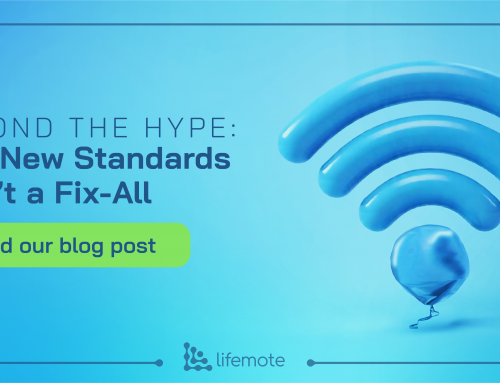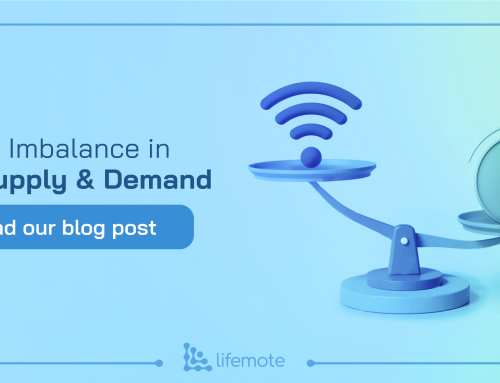The Status Quo for Care and Retention at ISPs
Internet Service Providers (ISPs) cannot seem to catch a break. Support costs and maintenance truck roll expenses continue to increase but do not necessarily correlate to improving key customer satisfaction metrics or NPS ratings. One of the reasons why support teams cannot reliably improve customer retention metrics is the quality of data collection telemetry that CPE equipment frequently collects across the ISP installed base. To complicate things further, CPE equipment collects data in a proprietary and closed model depending on the CPE hardware provider, which leads to inconsistent quality of CPE telemetry data, which may not help in efficient network analysis.
So how do ISPs break free from this conundrum? The answer might lie in opening up the data collection mechanism across CPEs. Let’s unpack the case for open data collection and understand what it means for ISPs in this article.
The Case To Make CPE Data Collection Inclusive
Before we make the case to make data collection open and transparent, let’s understand for a brief minute how CPE data collection works today. CPEs usually communicate through a proprietary software layer between the hardware to collect data at predetermined frequencies and data payload volumes. While the CPE hardware provider might have optimized the data collection to be optimal without causing issues in CPE performance, it does compel Wi-Fi data analytics platforms to manage these CPEs remotely to align with the proprietary data collection standard. As a result, ISPs usually go with the bundled-in Wi-Fi data analysis software provided by most CPE hardware providers since any other Wi-Fi data analytics platform might not be compatible with these CPEs.
This model might work with a fraction of ISPs willing to stick to one CPE hardware provider, but that is usually untrue. As they build and scale their customer base across huge regions, ISPs tend to work with many different CPE providers, resulting in significant fragmentation across their data collection mechanism over their device population.
So how can open data collection mechanisms solve the data fragmentation problem? First, the data collection mechanism is decoupled with the hardware provider. In simple terms, it means that the data collection agent used by the Wi-Fi analytics platform can abstract the technical implementation details running under the hood for these CPE devices and extract data, thus enabling the platform to work seamlessly across multiple CPE hardware providers. Some sophisticated Wi-Fi analytics platforms can provide more frequent data collection and detailed level granularity. Wi-Fi analytical platforms can enable various support-driven use cases depending on the frequency and granularity of data collected.
Device-Independent Data Collection: The Lifemote Advantage
If open data collection piques your curiosity, then the Lifemote approach to data collection might help you understand how comprehensive open data collection systems could be.
Lightweight Agent Presence
The differentiated approach to data collection begins with Lifemote’s lightweight TR069-compatible data collection agent, which requires a simple TR-069 command to download the agent on a CPE. Once downloaded, it runs a lightweight bash script (~75 KB), which can directly talk to the CPE’s Linux operating system (OS) without requiring additional software layers.

Data collection mechanism with Lifemote Agent
Wide Range of Supported CPEs
Since there is no dependency on the software and the agent can communicate directly with the OS, it can be implemented across various CPE hardware. Most Wi-Fi analytics platforms can usually deploy their agent on only 10-20% of their install base, having a varied mix of CPE hardware.

Lifemote can easily work with all CPE types in ISPs install base
In sharp contrast, Lifemote can cover over 80-90% of a CPE’s install base since the agent can talk directly to the chipset drivers with a single TR-069 command to download itself and work at a lower level. From that point, the agent can run at deeper granularity to collect in-home network metrics, providing minute-level data collection across various metrics such as RSSI, PHY rate, and airtime usage. All this detailed level data collection is made possible, with less than a 1% CPU footprint and a megabyte of memory usage, with the agent consuming less than 3 MB of data per day on average.
Extensive Domain Expertise Built-In for Cutting-edge Analysis
Thanks to the deeper granularity and frequency of data collected, Lifemote can collect detailed-level analytics to provide the critical building block for support-driven use cases. But what sets apart Lifemote’s approach to data collection is the extensive network domain experience built into the platform. As a result, all the data collected might not be fruitful if the ISP support team continues to struggle to improve their average handling times (AHT) and improve customer NPS scores. Fortunately, the data is augmented with deep domain experience and machine learning models, which continue to learn from individual CPE performance and across the entire CPE population for a given ISP. This blend of data with insights provides the right foundation for investigating detailed support scenarios like client over roams, band steering analytics, and greedy client detection. In addition, Lifemote’s analytical dashboard can provide an intuitive interface designed for first line and second line support agents to investigate critical in-home Wi-Fi issues faster, thus reducing the overall AHT times across the support lifecycle.
Open Data Collection: Bringing All CPEs Into the Fold
Open data collection is not only possible for ISPs, but also a significant differentiator in how quickly CPEs are configured for data collection, all the way to how their support teams can turn around Wi-Fi issues for their customers. Furthermore, when implemented effectively, the proper set of data collection mechanisms can genuinely improve the post-sales experience for customers and help ISPs improve long-term customer QoE scores.
Lifemote is built with ease of use and cutting-edge AI models, which work on top of its open data collection made possible by its TR-069 compatible lightweight agent. To experience the difference that open data collection can make with deep network expertise, book a demo with Lifemote Networks today.
About the Authors:
 Fatma Nur Kılıçlı
Fatma Nur Kılıçlı
Sales Manager
nur.kilicli@lifemote.com

Zafer Meriç
Strategic Sales Coordinator
zafer.meric@lifemote.com



